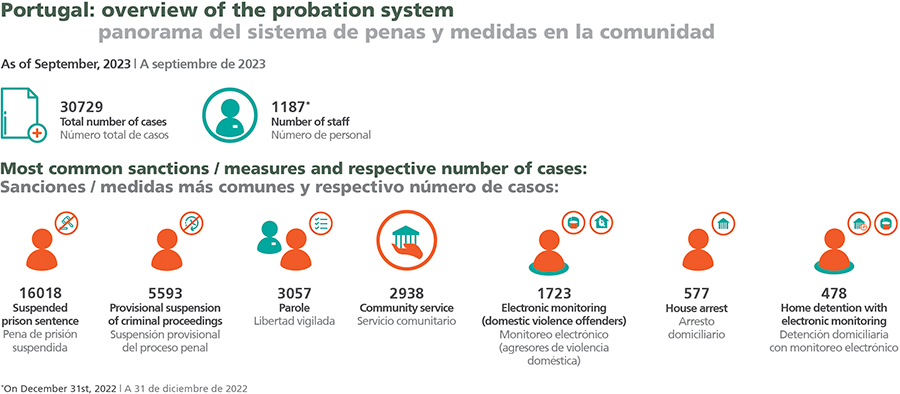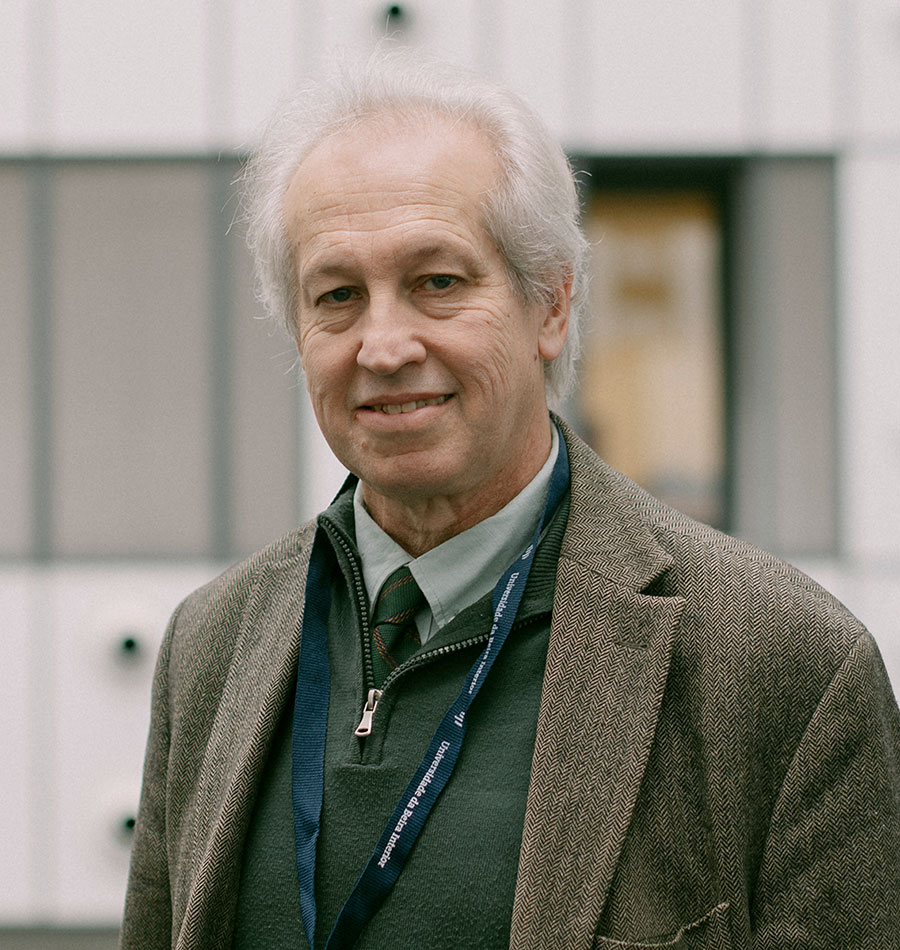Interview
Rui Abrunhosa Gonçalves
Director-General of Reintegration and Prison Services, Portugal
In this insightful interview with the Director-General for Reintegration and Prison Services in Portugal (DGRSP) we discuss the key priorities within the prison system. Addressing concerns such as workforce demotivation and shortages, the management of violent inmates, and the need to enhance security measures, he provides insights into the measures being implemented to respond to these pressing issues.
JT: The most recent annual report by the Ombudsman’s National Prevention Mechanism warns of several particularly worrying issues in the Portuguese prison system, including overcrowding and a shortage of technical professionals.
What are the main concerns on your administration’s priority list, and what measures are being adopted to respond to these needs?
RAG: My primary focus lies with the dedicated personnel of the DGRSP because, without their commitment, our ability to achieve anything is greatly hindered. Addressing the shortages in our workforce and valuing our professionals is imperative.
The overwhelming majority of our professionals have not seen any promotions in the last 10 to 20 years, which fosters an atmosphere of demotivation and weariness, as they grapple with the lack of career advancement opportunities. And although prison guards make up the bulk of our staff, I’m also referring to probation and healthcare professionals.
Additionally, the aging workforce within our organisation is a growing concern. A substantial portion of our professionals are over the age of 50. This situation raises alarm because if we don’t take significant steps to replenish our workforce at various levels, we will undoubtedly face significant challenges in the near future.
When it comes to prison guards, we have devised a dual-pronged approach to tackle the issue, focusing on both promotions and the recruitment of new professionals. This approach will also be extended to other professional categories, especially reintegration staff, who play a pivotal role in implementing various programmes.
The high inmate population poses a significant obstacle to effective prison treatment. While I wouldn’t say that our system is overwhelmed across the board, some prisons, even if at relatively low levels, face this issue. Nevertheless, thanks to the amnesties resulting from His Holiness the Pope’s visit to Portugal, we have seen a considerable reduction in the prison population. Pardons and amnesties were granted, which respectively, reduced sentences by one year, and suspended others entirely. The Amnesty Law came into force on 1 September 2023, and since then, around 300 to 400 people have been released from prison. We anticipate that by the end of the year there will be an even greater decrease due to the adjustments in sentences with pardons.

What other challenges and progress would you highlight in the General Directorate of Reintegration and Prison Services?
RAG: For the first time in 15 years, we are holding a promotion award procedure for prison guards. This is a multi-year process, and next year more prison guards will be promoted. In addition, we’ve managed to outsource the hiring of professional practitioners specialising in social reintegration.
Another notable point is the progress of an extraordinary project, already funded, with the aim of finally closing the Lisbon Prison Establishment. It’s a very old facility that doesn’t have the right conditions to continue operating.
We are carrying out work in other prisons to relocate inmates. While it may not be fully accomplished during my term, significant sections will be gradually closing and inmates will be transferred to other prisons. In addition, we are carrying out work on one of the educational centres, which have also been neglected.
Upon assuming this role, we realised that although the merger of the probation services and the prison services into a single Directorate had taken place 11 years ago, in practice it had never been effective. Therefore, my main objective is to promote this merger, especially with the creation of interdisciplinary probation and prison teams, thus allowing mobility and the application of programmes between these areas.
This initiative tackles a significant issue within the General Directorate of Reintegration and Prison Services, which is the lack of internal mobility. Currently, it is not possible to transfer an employee from an electronic surveillance team, social reintegration or an educational centre to a prison, or vice versa (taking into account the employee’s preference), due to limitations in the rules governing inter-career mobility within the public administration.
Overall, a number of activities are underway that I am confident will result in significant improvements in the service we provide in the near future.
We acknowledge the far-reaching consequences of drug trafficking activities, not only within prison walls but also beyond, affecting the families of incarcerated individuals who often face extortion and coercion, among other challenges.”
JT: There has recently been an increase in attempts to smuggle illegal products into prisons by throwing parcels inside, an issue identified by the president of the National Union of Prison Guard Corps as an indicator that the monitoring of smuggling through prison gates is being effective.
What are the main challenges faced and measures implemented by the Portuguese prison system in the fight against smuggling and organised crime inside prisons?
RAG: We have recently taken a significant step by incorporating the issue of drug trafficking within prisons into the Criminal Policy Plan for 2024.
We acknowledge the far-reaching consequences of this illicit activity, not only within prison walls but also beyond, affecting the families of incarcerated individuals who often face extortion and coercion, among other challenges. We believe that this issue should be a priority in terms of criminal investigation, even if the quantities of drugs seized are relatively low compared to seizures made outside prisons. Our initiative was well received by the Ministry of Justice and the Directorate General for Justice Policy.
To combat the ongoing efforts of criminals attempting to smuggle items into prisons, especially during visits, the Prison Guard Corps has implemented rigorous measures leveraging all available means, such as full-body scanners, handheld radars, and video surveillance.
Despite these efforts, criminals often try new ways to circumvent these measures. A case in point is the practice of throwing objects into prisons, which became more prominent during the pandemic-induced suspension of visits.
In some prisons located closer to urban centres, where this problem was more pronounced, we have installed nets in the courtyards to effectively address this issue.
Furthermore, we conduct comprehensive searches with detection dogs to further enhance security. I can say that we are being effective in this regard. Recently, we intercepted a drone carrying a load of mobile phones into a prison, for example.
These achievements are the result of a collaborative endeavour involving our dedicated staff and the application of available technology. However, it’s essential to acknowledge the added challenge of conducting thorough searches when faced with a large number of visitors and a limited number of guards.
Currently, we are in the final stages of implementing video surveillance systems in the remaining few prisons where such systems have not yet been installed.
Moreover, we are contemplating the widespread expansion of video surveillance to educational centres. This technology plays a pivotal role in safeguarding both our staff and individuals in our custody. The recorded footage serves as valuable evidence in situations involving baseless accusations and also enables the identification of potential inappropriate conduct on the part of staff or prison guards, facilitating the implementation of appropriate corrective measures.

The General Directorate is implementing a measure that involves placing telephones in cells, with the aim of preventing illicit communication devices from entering prisons. Could you tell us a bit more about this initiative?
RAG: This initiative began as a pilot project in a few prisons and has proved extremely successful, being particularly beneficial during the pandemic. Beyond its evident benefits for social reintegration, this initiative significantly enhances security within our correctional facilities. For instance, the availability of telephones in cells enables inmates to quickly contact the guards in case of emergencies, eliminating the need for less effective methods like knocking on doors.
Currently, we are actively advancing the implementation of this measure across all prisons, facing some challenges from a technological point of view, such as running fibre optic cables through the facilities. This process can be particularly challenging in larger prisons. Nevertheless, we are confident that, by 2024, we will have this system fully operational in the majority of our prisons.
As a forensic psychologist dedicated to assessing and intervening with violent offenders, what is your perspective on the management of violent behaviour in prisons, including the promotion of extremist and violent ideas through radicalisation in prison?
RAG: Regarding the issue of radicalisation, at the moment I can say that it is not a widespread problem within the Portuguese prison system. However, even though it’s not prevalent, it doesn’t mean we’re not vigilant and concerned about it. We consistently monitor this matter.
As for violence, we endeavour to prevent it from happening by detecting sharp and piercing objects through searches. These incidents, which occur mainly in prisons where there are young and impulsive individuals, combined with a certain degree of violent tendencies, are sometimes related to rivalries over links to external groups, more or less organised. We make careful efforts to avoid clustering these rival groups together by dispersing individuals across different prison units, although we don’t always succeed in preventing conflicts. In facilities where such clashes are more frequent, we employ measures like separation and, in certain cases, the imposition of stricter disciplinary measures.
In the realm of programmes tailored to address these specific challenges, we aim to carry out more personalised interventions.
The aim is not only to curb aggressive behaviour, but also to understand the underlying causes.
Rui Abrunhosa Gonçalves
Director-General of Reintegration and Prison Services, Portugal
Rui Abrunhosa Gonçalves has been Portugal’s Director-General for Reintegration and Prison Services since August 2022. With a degree in Psychology and a Masters in Psychology of Deviant Behaviour, he was a senior reintegration officer at the General Directorate of Prison Services from 1986 to 1989. He has a doctorate in Psychology of Justice from the University of Minho, where he is an Associate Professor and Director of the Master’s Degree in Psychology of Justice. He has had a distinguished career in the field of Justice Psychology, including coordinating psychology units and acting as a forensic psychology expert. With several national and international publications, he is dedicated to comprehensive research on issues such as violent offenders, prison treatment, psychopathy, crime and sexual violence and juvenile delinquency.
Promoted content
Learn more about this book exploring the duality between violent extremism and mental health in the actions of “lone wolf” terrorists.



